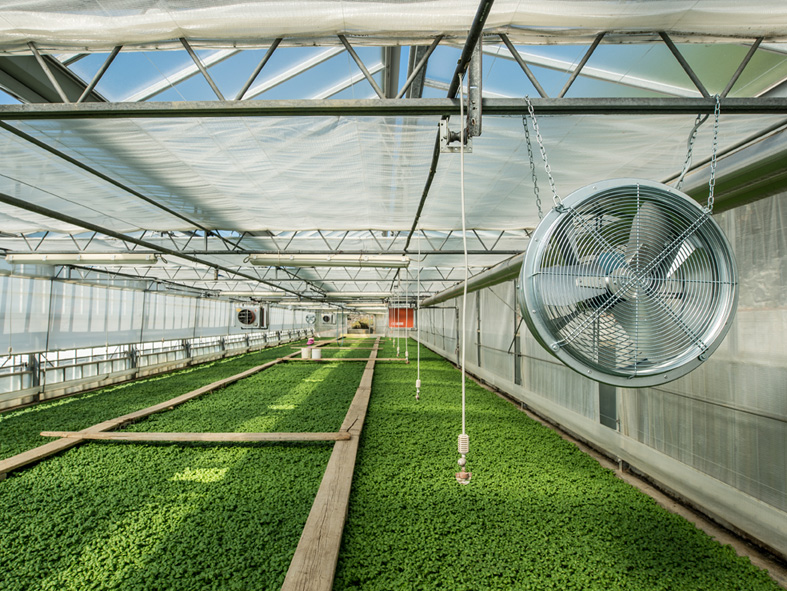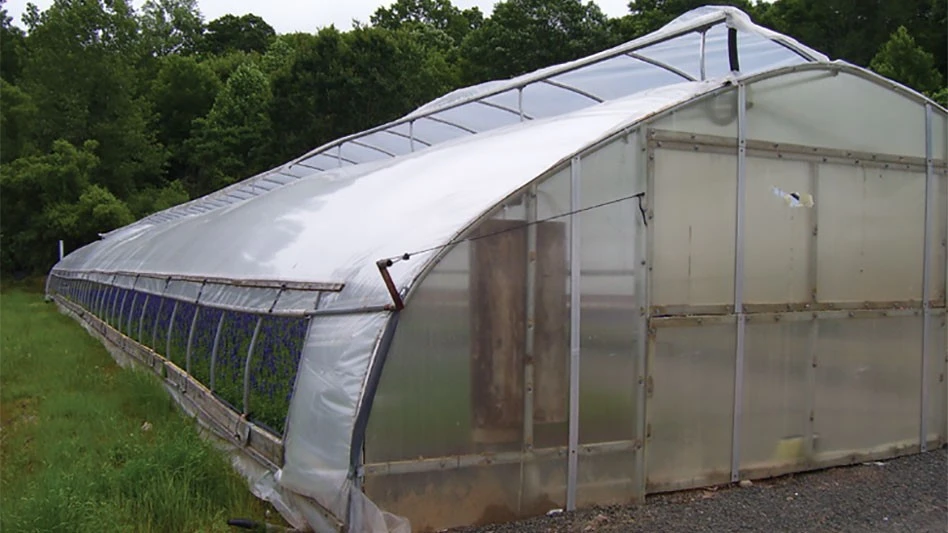Greenhouse Cooling Calculator
Effective temperature regulation is essential for optimal greenhouse performance and crop productivity. This tool designed to estimate the cooling requirements needed to maintain optimal temperature conditions for plant growth. By simulating environmental parameters and equipment performance, it supports data-driven decisions for efficient climate control in greenhouse systems.
A greenhouse cooling calculator helps you to predict energy consumption
There are four primary methods of implementing a cooling system in a greenhouse, each offering distinct advantages depending on climate conditions, crop type, and structural design. Understanding these methods is key to selecting the most efficient and cost-effective solution.
1. Closed Greenhouse with Mechanical Cooling
A greenhouse is “sealed” or “closed” when it has no air exchange with the outside. To maintain optimal temperature and humidity, it requires heating, cooling, and dehumidification systems. Cooling is especially critical in closed greenhouses since natural ventilation isn’t possible, so mechanical or alternative methods must remove excess heat to ensure ideal growing conditions.
Cooling and dehumidification are usually done via heat-exchangers in the greenhouse. This enables higher CO2 concentrations in the greenhouse and consequently a higher crop production rate.
In some cases, a sealed greenhouse is linked to underground aquifer or very large buffer. During sunny or hot days, the surplus heat is stored in the short term (diurnal) buffers or long term (seasonal) storage in underground aquifers. During nightime or cloudy days, warm water from the aquifer or buffer heats the greenhouse.
Input Parameters
Results
Hortinergy calculates the sensible and latent cooling needs to control the greenhouse inner climate (temperature and relative humidity).
Sensible cooling : it is the process in which only the sensible heat of the air is removed so as to reduce its temperature, without any change in the moisture content of the air.
Latent cooling : it is the capacity to remove the moisture from the air, without any change in the temperature of the air.
Based on the results, the engineer can design the best HVAC system and calculate energy consumption.
Below is a typical example from a report. Results are shown in different ways.
First, as a monthly synthesis.
Once inner relative humidity is exceeded by relative humidity sets, latent cooling is engaged.
then an Hourly demand
Sensible heat : it is the amount of heat exchanged, without any physical stage transition, between several bodies forming an isolated system.
Latent heat : it is the amount of energy exchanged between an object and its environment during a change of state, i.e. during solidification, fusion or boiling
2. Pad & Fan System
The pad and fan system cools greenhouses via evaporative cooling, where water evaporation lowers air temperature. Fans pull outside air through wet pads before circulating it inside. It works well in hot, dry conditions but loses efficiency in humid climates or nights due to reduced evaporation.
The pad and fan system cools greenhouses via evaporative cooling, where water evaporation lowers air temperature. Fans pull outside air through wet pads before circulating it inside. It works well in hot, dry conditions but loses efficiency in humid climates or nights due to reduced evaporation.
Input Parameters
1. Maximum ventilation
Air renewal maximum rate
2. Pad
Pad thickness:
Pad height:
Pad length:
Flush rate:
Maximum water flow for the whole greenhouse:
3. Fan
Number fans for the whole greenhouse.
air flow for a fan:
Electrical power at 100% air flow:
Electrical power at 75% air flow:
Electrical power at 50% air flow:
Electrical power at 25% air flow:
4.Temperature Regulation
Cooling temperature:
Priority for ventilation of humidification? Distance between pad and fan:
3. Fog in Classic Greenhouses
The fog system cools greenhouses through evaporative cooling by spraying fine mist from high-pressure nozzles, which evaporates before reaching crops. Proper nozzle height and spacing are essential for effective and even cooling.
 .
.
Input Parameters
Maximum water flow for the whole greenhouse:
Cooling temperature:
4. Forced Ventilation with Fan
Forced ventilation uses mechanical fans to regulate airflow in the greenhouse. Exhaust fans remove hot, stale air, while cooler air enters through vents, helping control temperature, humidity, and CO₂ levels. It’s commonly used in large or enclosed greenhouses, especially in hot climates, and is often combined with systems like pad-and-fan or fog for enhanced cooling efficiency.

4. Natural Ventilation
Natural ventilation relies on passive airflow from temperature differences and wind. Warm air exits through roof vents while cooler air enters from side openings, creating continuous circulation. It’s energy-efficient and ideal for mild climates with steady winds, but offers less precise control and is less effective in hot, still weather or sealed greenhouses.

Hortinergy is an online software. You can choose your offer, create an account and start your project!
We Care about your Data
Your data is fully yours and we respect your privacy. We only use it to simulate your greenhouse project and never share or reuse it. It’s securely stored for 1 year, after which it is deleted. You can ask us to delete it anytime. We’re committed to your privacy and GDPR-compliant.
